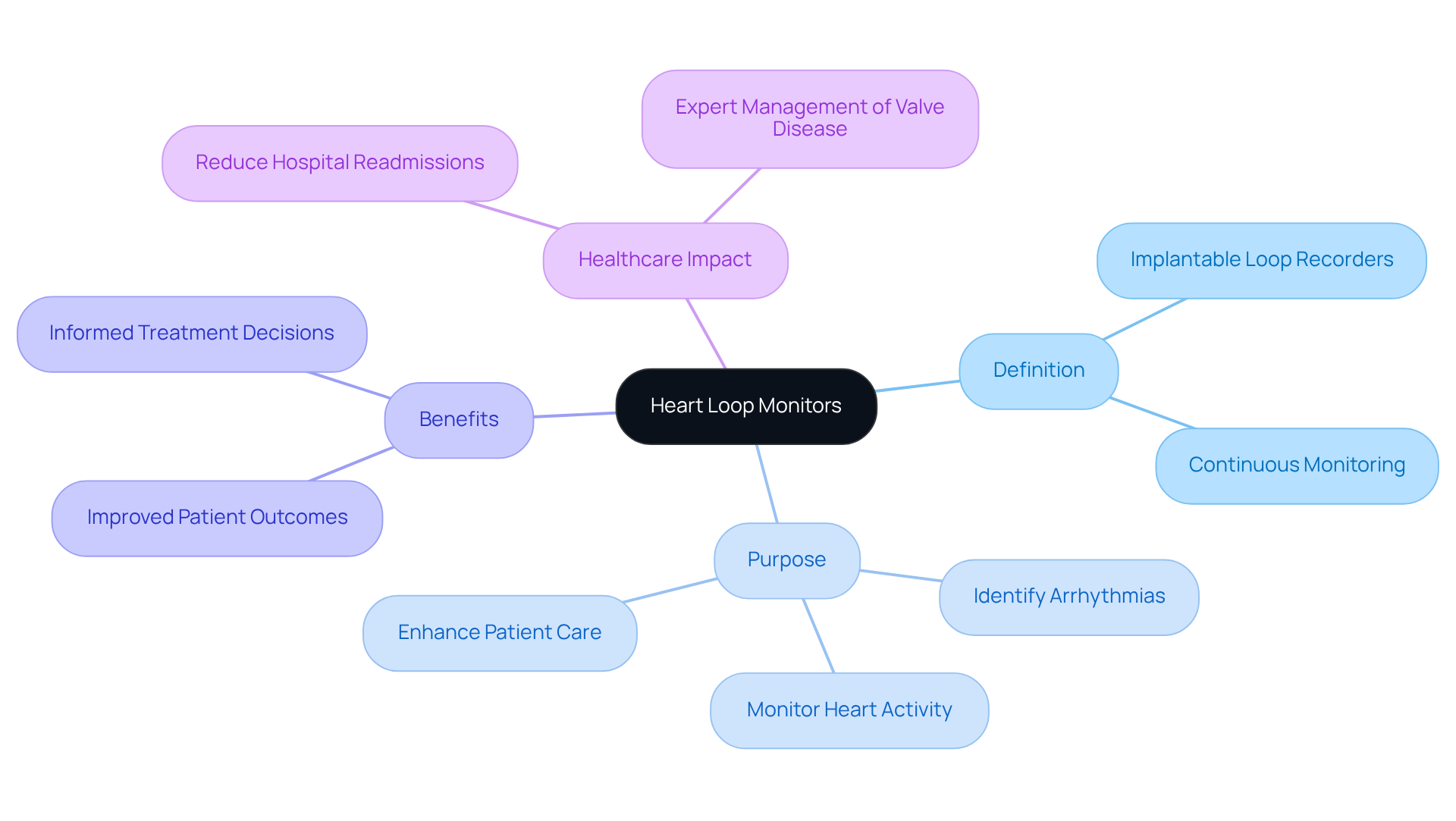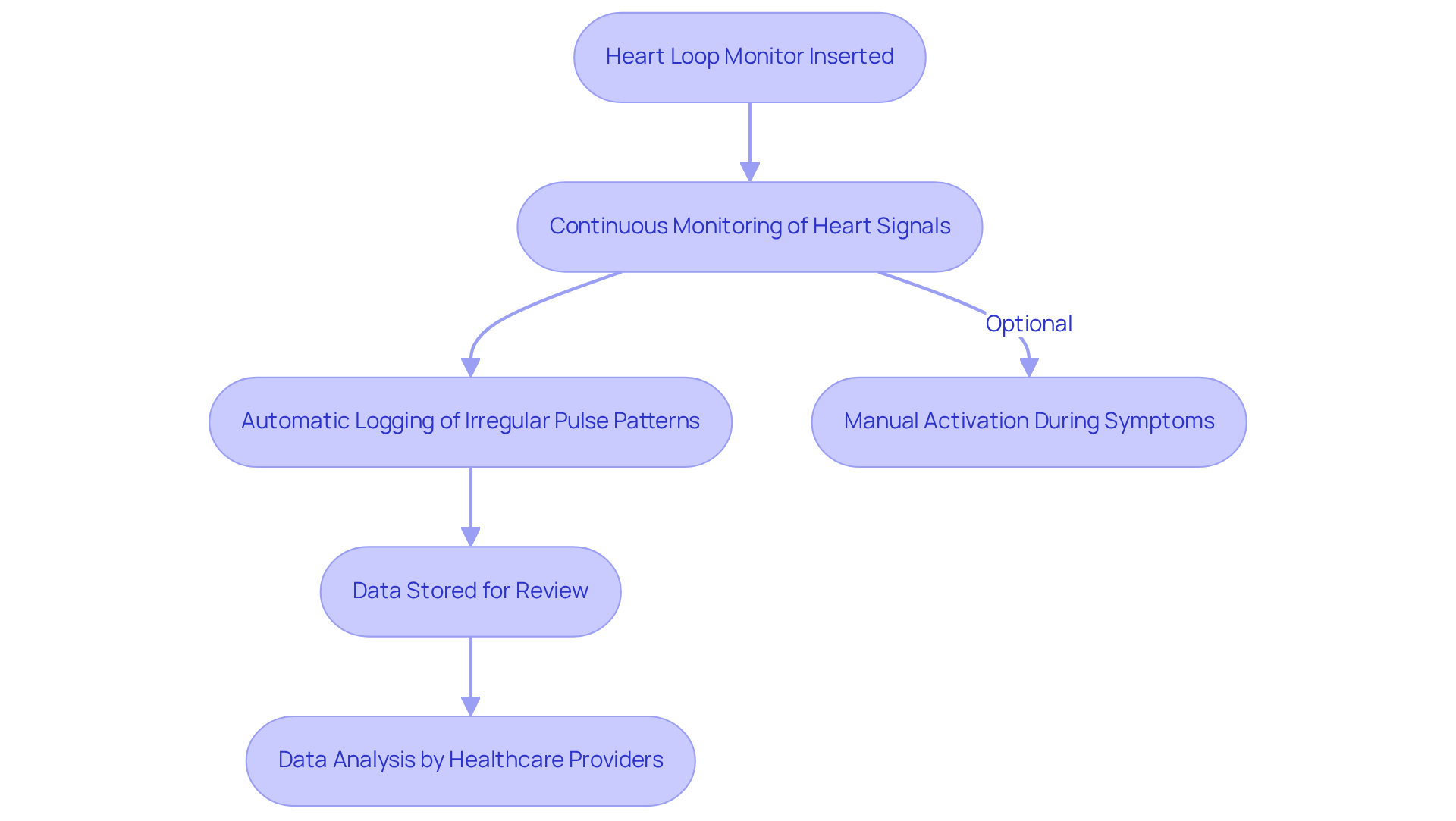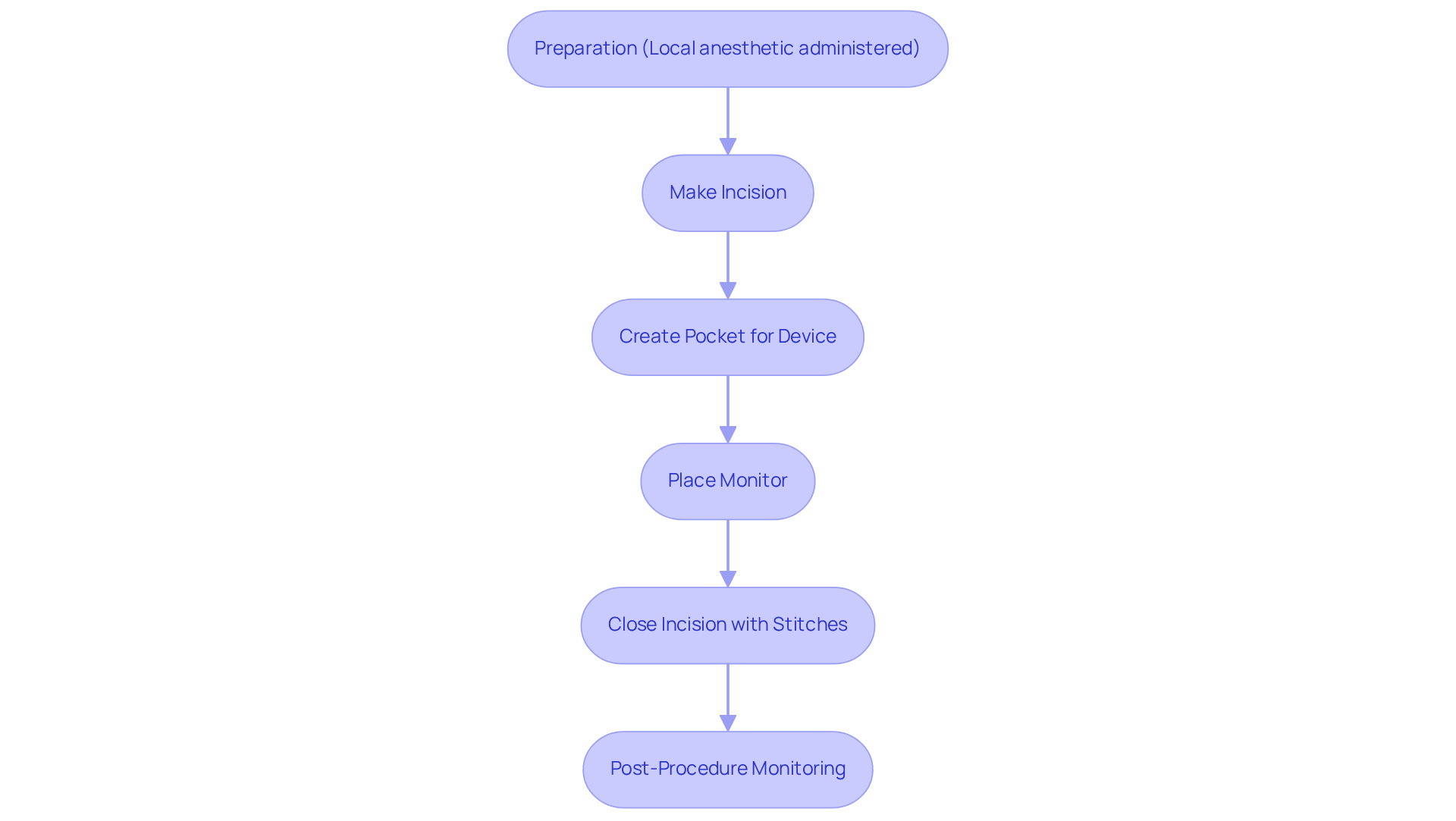


Heart loop monitors, also known as implantable loop recorders, are compassionate devices designed to continuously observe the heart's electrical activity. They are particularly beneficial for detecting arrhythmias and unexplained fainting, which can be concerning for many patients. By emphasizing their role in enhancing patient care, these monitors provide long-term data that helps healthcare providers make informed treatment decisions. This ultimately leads to improved outcomes and a reduction in hospital readmissions.
In addition to this, heart loop monitors can offer peace of mind to patients and their families. Knowing that their heart health is being monitored can alleviate anxiety and foster a sense of security. As healthcare providers utilize this valuable data, they can tailor treatments that truly meet the needs of each individual, ensuring that every patient feels supported on their health journey.
Furthermore, if you or a loved one are experiencing symptoms that warrant further investigation, consider discussing the option of a heart loop monitor with your healthcare provider. This proactive step could be a vital part of understanding and managing heart health, providing reassurance and clarity in the process. Remember, you are not alone in this journey; there are resources and support systems available to help you every step of the way.
Heart loop monitors, also known as implantable loop recorders (ILRs), mark a significant step forward in cardiovascular care. These small devices continuously track the heart's electrical activity, helping to identify potentially life-threatening arrhythmias. This advancement not only enhances patient monitoring but also plays a crucial role in the timely diagnosis and management of heart conditions, especially for those who may be at heightened risk.
However, with the benefits of prolonged monitoring, it’s natural for patients to have concerns about the procedure's safety and the potential risks involved. What factors should you consider when weighing the advantages of heart loop monitors against their inherent risks? Understanding these aspects can empower you to make informed decisions about your health. Remember, you are not alone in this journey, and support is always available to help you navigate these choices.
Heart loop monitors, also known as implantable loop recorders (ILRs), are small devices that are placed beneath the skin of the chest to continuously monitor the heart's electrical activity. These instruments are essential in addressing the that skilled nursing facilities often encounter, as they provide comprehensive management of arrhythmias. They are particularly helpful in identifying arrhythmias, unexplained fainting, and other rhythm disorders that may affect the cardiovascular system.
By recording cardiac rhythms over extended periods—up to three years—these devices offer invaluable data that can assist healthcare providers at Amavita Vascular Health in making informed decisions about treatment options. Their primary goal is to detect abnormal heart rhythms that might not be captured during standard monitoring, ultimately enhancing patient care and outcomes.
This advanced diagnostic tool is part of a broader strategy aimed at reducing hospital readmissions and improving patient outcomes through seamless coordination and expert management of valve disease and arrhythmias. If you have concerns about your heart health, consider discussing the potential benefits of heart loop monitors with your healthcare provider. They are here to support you every step of the way.

Heart loop monitors play a vital role in monitoring heart health by consistently capturing the electrical signals of the organ. Once inserted, these devices remain comfortably positioned beneath the skin, automatically identifying and logging any irregular pulse patterns. This capability allows them to store data for later analysis, enabling healthcare providers to review important information during follow-up appointments. With sensors that continuously track the heart's activity, even occasional arrhythmias are reliably recorded, ensuring that no significant event goes unnoticed.
Patients also have the option to manually activate the device during symptomatic episodes, providing their healthcare team with additional valuable data. The use of a heart loop monitor for continuous monitoring is crucial in addressing cardiovascular challenges, especially in skilled nursing facilities, where early detection can significantly enhance patient outcomes and reduce the likelihood of hospital readmissions.
By integrating advanced AI-powered diagnostic technology, like that used by Amavita Heart and Vascular Health®, healthcare providers can ensure timely interventions and improve the overall efficiency of cardiac care. The FDA-approved AI ultrasound technology offers real-time assistance for precise imaging, producing reports on cardiac structure and function within minutes. This facilitates informed decisions and compliance with high , ultimately supporting patients in their journey toward better health.

The implantation of a heart loop monitor is usually conducted as an outpatient procedure, lasting approximately 10 to 20 minutes. At Amavita Heart and Vascular Health, we understand that you may have concerns about this procedure. Our specialists ensure that it is part of a comprehensive care plan tailored specifically for individuals at elevated risk, including those experiencing arrhythmias or chest discomfort. To help you feel comfortable, a is administered to numb the area where the instrument will be inserted.
A small incision is made in the upper chest, and a pocket is created under the skin to accommodate the device. Once the monitor is placed, the incision is gently closed with stitches. We know that the time after the procedure can be a bit nerve-wracking, so patients are usually monitored for a short period to ensure there are no immediate complications. Following the implantation, you can generally return to your regular activities, although some limitations may be advised during the early healing period.
This advanced heart loop monitor capability allows us to provide targeted cardiovascular treatment, ensuring that any irregularities in rhythm are swiftly addressed. Our goal is to improve your overall health outcomes, and we are here to support you every step of the way. If you have any questions or need assistance, please don’t hesitate to reach out—we are committed to your well-being.

Heart loop monitors provide numerous benefits, including the continuous observation of cardiac rhythms, which can lead to timely diagnosis and management of arrhythmias. This capability is particularly advantageous for individuals at high risk, such as those living with diabetes, hypertension, or a family history of cardiovascular issues. These individuals may experience sporadic symptoms that standard testing could easily overlook.
Amavita's CardioElite™ program takes this monitoring a step further, providing advanced, real-time diagnostic data and 24/7 cardiology consultation. This ensures a comprehensive approach to cardiovascular management. The integration of AI and AHA certification within the CardioElite™ program enhances its effectiveness, facilitating proactive, data-driven care that can significantly lower readmission rates.
However, it’s important to acknowledge that, like any medical procedure, there are risks involved. Potential complications may include infection at the implantation site, bleeding, and device malfunction. Yet, despite these risks, the —especially within the framework of the CardioElite™ program—often outweigh the potential downsides. This is particularly true for patients experiencing unexplained symptoms or those at risk for serious heart conditions. Remember, you are not alone in this journey; support and understanding are always available to you.

Heart loop monitors, or implantable loop recorders, play a vital role in cardiovascular health by continuously tracking the heart's electrical activity. These small devices not only help identify arrhythmias but also significantly enhance patient care through comprehensive monitoring over extended periods. By utilizing heart loop monitors, healthcare providers can make informed decisions that lead to better health outcomes and reduced hospital readmissions.
Throughout this article, we have explored various aspects of heart loop monitors, including their operation, the implantation procedure, and the associated risks and benefits. The seamless integration of advanced technology, such as AI diagnostics and 24/7 cardiology consultation, exemplifies how these devices contribute to proactive and data-driven cardiovascular management. While there are potential risks involved with implantation, the advantages—especially for high-risk patients—far outweigh the downsides. This makes heart loop monitors an invaluable tool in modern healthcare.
In light of the insights shared, it is essential for individuals to consider the importance of heart loop monitors in managing their cardiovascular health. Have you had a conversation with your healthcare provider about the potential benefits of these devices? Engaging in such discussions can lead to timely interventions and improved patient outcomes. As heart health remains a priority, the proactive use of heart loop monitors stands as a testament to the advancements in medical technology aimed at fostering better health and well-being. Remember, you are not alone on this journey; support is available to help you take control of your heart health.
What are heart loop monitors?
Heart loop monitors, also known as implantable loop recorders (ILRs), are small devices placed beneath the skin of the chest to continuously monitor the heart's electrical activity.
What is the purpose of heart loop monitors?
The purpose of heart loop monitors is to provide comprehensive management of arrhythmias, helping to identify abnormal heart rhythms, unexplained fainting, and other rhythm disorders that may affect the cardiovascular system.
How long can heart loop monitors record cardiac rhythms?
Heart loop monitors can record cardiac rhythms over extended periods of up to three years.
How do heart loop monitors assist healthcare providers?
They offer invaluable data that assist healthcare providers in making informed decisions about treatment options, particularly in detecting abnormal heart rhythms that may not be captured during standard monitoring.
What is the broader strategy involving heart loop monitors at Amavita Vascular Health?
The broader strategy aims to reduce hospital readmissions and improve patient outcomes through seamless coordination and expert management of valve disease and arrhythmias.
Who should consider discussing heart loop monitors with their healthcare provider?
Individuals with concerns about their heart health should consider discussing the potential benefits of heart loop monitors with their healthcare provider.